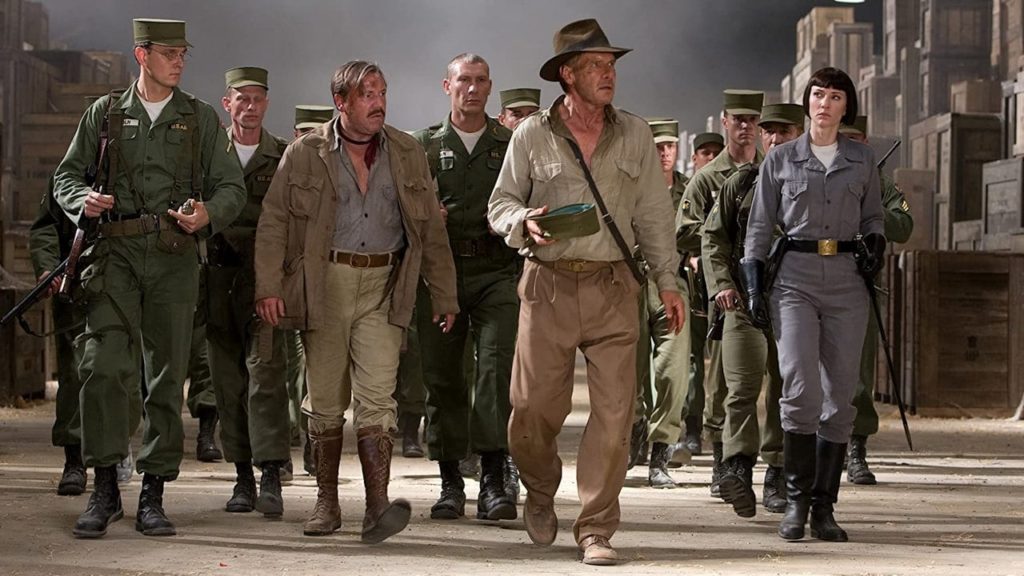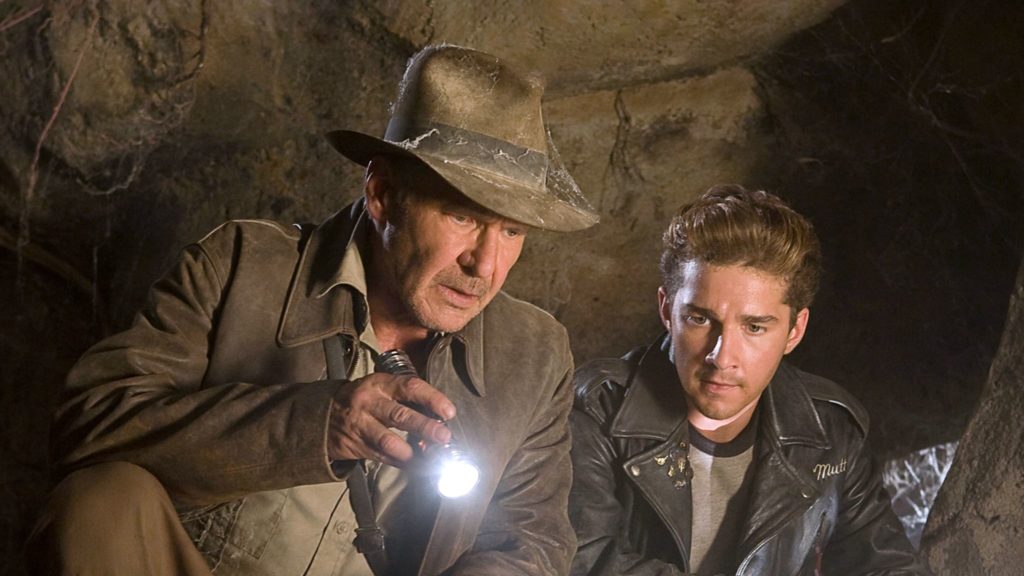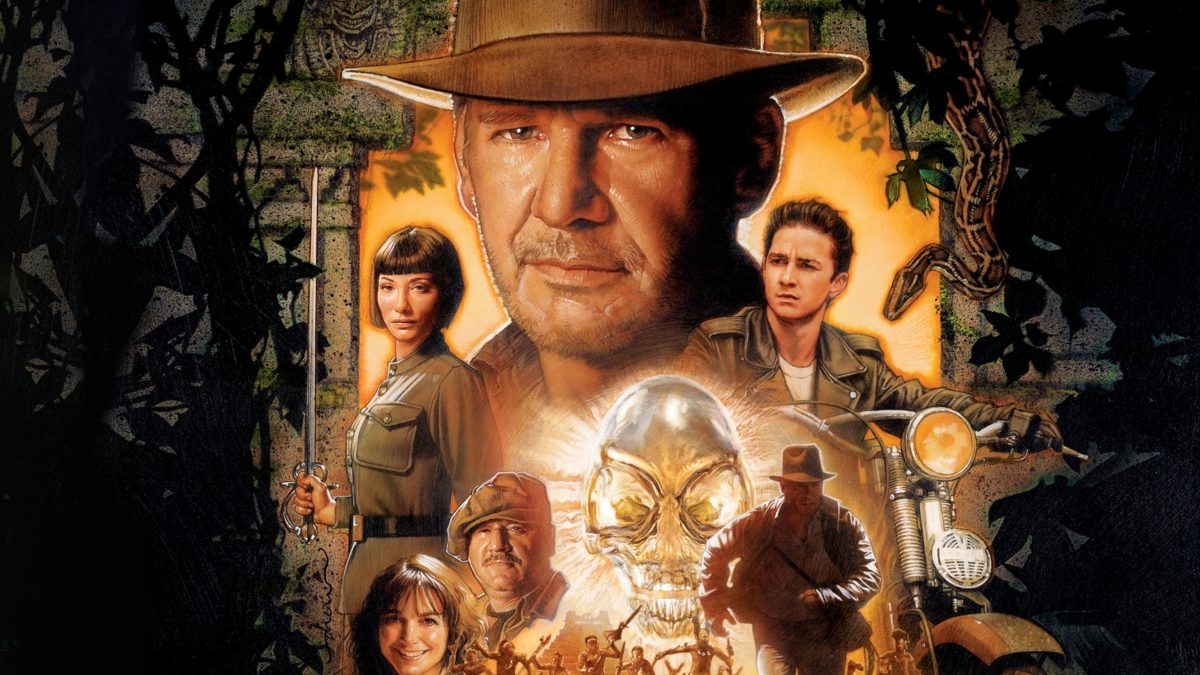I'm not saying it was aliens, but it was aliens
The first three Indiana Jones movies comprise one of the finest trilogies in cinematic history, but there’s no particular reason they had to stop at three. By design, Indiana Jones could embark on an adventure of the week, each stand-alone and more exciting than the last. This idea is depicted perfectly in the incredible final shot of Raiders, a vast expanse of stories captured in wooden boxes stashed away, ready to be pried open and investigated. As a trilogy, however, they work incredibly well: each one has a distinct tone (though Crusade borrows significantly from Raiders), and the ending of Last Crusade is perfectly conclusive. For those of us longing for more, we could turn to The Adventures of Young Indiana Jones and its 22 spinoff TV movies.
So while there’s no reason to inherently reject a fourth Indiana Jones film, except perhaps that Harrison Ford was nearing eligibility for social security by the time they got around to filming it, it still feels unnecessary. When Indiana Jones and the Crystal Skull debuted in 2008, it received the Star Wars prequels treatment: it garnered good reviews from critics but earned a toxic reputation among fans, at least in the Internet geek discourse. “Nuke the fridge” became a neologism for movie franchises entering a phase of absurd and idiotic badness, an homage to a widely criticized scene early in the film.

Time, however, has a way of healing such wounds. Mediocre legacy sequels are a dime a dozen in the 2020s, and the sting of unfulfilled expectations fades. I’ve noticed a movement of reappraisal for Indiana Jones and the Crystal Skull among various cinephile groups I follow. The conversation around the movie has shifted from “whom exactly should we crucify for ruining our childhood?” to “it’s not the originals but is it really that bad?”
Your appreciation for the film may well be tied to your tolerance for 2008-level CGI. I’m not an absolute believer in the idea that “practical is always better,” but there is certainly a tactile intensity missing from Crystal Skull. This is most apparent in the big vehicle chase in the jungle: Mutt Williams (Shia LeBeouf) swings through the vines with some digital monkeys, while various characters perform green screen acrobatics across two trucks. Compared to the truck chase in Raiders, it feels like a piece of plastic. Moreover, the film’s climax resembles a video game cutscene, which, although conceptually in line with the face-melting Ark finale in Raiders, is remarkably less awe-inspiring.
Overall, the film just looks a bit “off” as an Indy picture. Spielberg’s cinematographer of choice for the past couple of decades, Janusz Kaminski, replaces Douglas Slocombe, a legend who built his reputation mainly on his outstanding work in the original Indiana Jones trilogy. It’s not like Kaminski isn’t trying to make it special: He leans into a wacky intensity with the lighting and shadows, presumably to evoke the pulpiness and artificiality of the old adventure stories on which Indy is based. But the result isn’t expressionistic adventure glory; rather, the film looks somewhat garish, especially compared to Slocombe’s typically grittier and more immersively lit work.

That said, parts of Crystal Skull really do kick you in the pants. The opening 45 minutes are outstanding, a table flip to the formula a la Temple of Doom: There’s an entertaining opening hot rod race that leads right to an extended set piece at the government warehouse seen at the end of Raiders. I love this metafictional touch: In Raiders, the pile of crates is a metaphor for all the grand, adventurous stories there are to tell in the wonderful medium of film. And just as the Soviet villains pillage long-sealed artifacts in the movie, inadvertently desecrating the sacred Ark, so Spielberg and co. pilfer through a beloved franchise for easy profit. Spielberg knows what he’s doing; he’s having fun and thumbing his nose at the reverence with which movie geeks hold Indy.
I also think the much-panned nuclear test is an outstanding scene, a heightened bit of atomic terror and surreality. The burning plastic suburban utopia sets a tone for apocalyptic stakes, one that the rest of the movie doesn’t quite live up to.
Shortly after Jones returns to his university, we are treated to my favorite segment of the film: a chase through a 1950s college campus. Spielberg packs as much ’50s American middle class iconography as he can muster into a few scenes. The university, previously depicted as a calm home base in two of the three previous movies, transforms into a thrilling location of danger. It’s a hoot.
These opening sequences — the warehouse plunder, the nuclear test, and the college chase — are Indiana Jones turned inside out. This is not just “another episode” of Indy’s adventures, but the joyful exhumation and corpse-kicking of Indiana Jones axioms we took for granted for a quarter century: the pre-atom bomb chronology, the respect for the sacredness of holy artifacts, the contrast between peaceful civilization and the rugged wild. All inverted.
It makes me wonder what Indy 4 would have been like if it had continued with subversive gags that deconstruct the very fabric of Indiana Jones movies for its runtime. Spielberg should’ve embraced his buddy George Lucas’s wily instincts and gotten silly with it: Maybe the villain could have been an Indiana Jones clone? Maybe the hat and whip could have become sentient by an ancient curse and turned against Indy? Given how the opening at the warehouse revisits an iconic setting of the original, perhaps Spielberg could have pulled a Zemeckis and constructed Back to the Future 2-style re-exploration of Indy’s greatest hits, all turned upside down via time travel or some other nonsense.

Unfortunately, the film instead shifts gears and settles into a lesser version of the classic Indy formula for its second and third acts. I know films aren’t made this way, but watching this movie feels like Spielberg losing interest in its making about 30% into the runtime. By the time Indy is visiting an exotic tomb and searching for an ancient artifact, it’s a case of been-there-done-that.
Indy 4 is a perfectly watchable movie throughout, though. This is a Spielberg flick, after all, well-crafted and exciting, even if parts of the movie don’t feel like they’re the best versions of themselves. Beyond the jungle car chase/vine swing and the CGI-heavy climax, the giant ants are somewhat underwhelming, not quite as vicious or hair-raising as they ought to be. It’s trying to leverage the skin-crawling tone Temple of Doom’s gruesome scenes without any of gut-churning grit of Indy 2 to back it up. (Nonetheless, the ants certainly stuck with me when I saw it in theaters in ’08 — I’ve long disliked ants, and the image of the man being pulled down the anthill in agony has permanently etched itself into my nightmares, far more than any horror movie scene.)
On a positive note, the cast is overall quite excellent. Ford is still Ford, even as he approaches his twilight years. His performance doesn’t quite match the vigor of the original trilogy, but his charisma endures. LeBeouf is surprisingly good at embodying his character’s edges; he feels like a natural fit in the Indiana Jones universe. I’m not sure he could have sustained the franchise as a lead, but I would not have minded seeing Spielberg and co. try. While I don’t find Karen Allen’s Marion compelling enough to be an epic romantic character, I was glad to see her return, as it resonates with the film’s themes of unearthing the past to find some closure in a new era.

Cate Blanchett is exceptional as a snarling Soviet dominatrix. Like most of the Indy villains, she becomes so obsessed with her goal that it quite literally consumes her, reminiscent especially of Belloq and the Ark. Her sheer force of charisma almost compensates for the film’s lethargic stretches, and she masterfully combines villainy and sexiness in a way that feels fresh for the series.
I admit that I’ve joined the ranks of the movie’s defenders, primarily due to the first 45 minutes, which deliver a refreshing shock to the Indy formula. The most infamously bad parts — the aliens, the nuclear test site, Shia LeBeouf — aren’t the real sources of the movie’s shortcomings. Instead, it’s a sense of obligated exhaustion and an overreliance on digital wizardry that drag the film down. Despite its flaws, the film is never boring, though: It offers just enough charm to crystallize into a satisfying, mishmash whole. It’s nowhere near the original trilogy, but then again, how many films in the history of cinema can claim to be?
- Review Series: Steven Spielberg
Is It Good?
Good (5/8)
Dan is the founder and head critic of The Goods. Follow Dan on Letterboxd. Join the Discord for updates and discussion.

